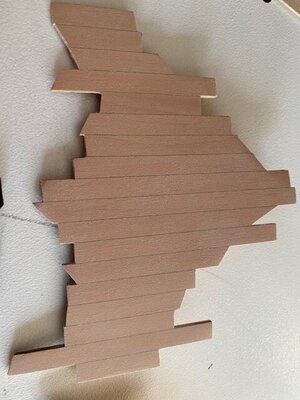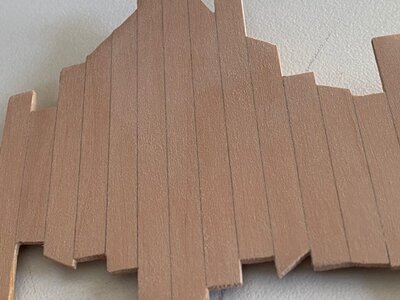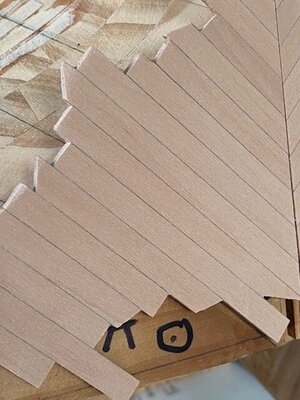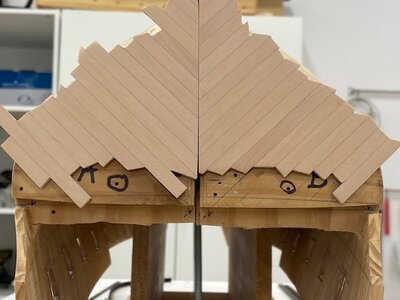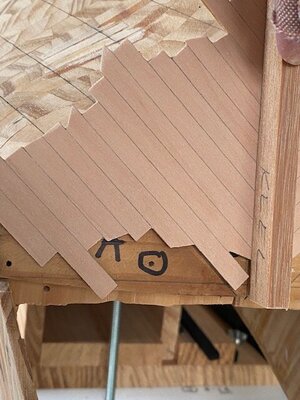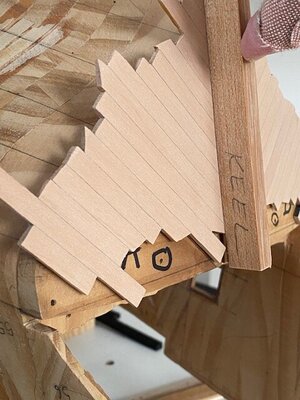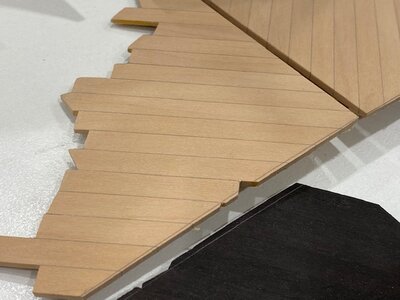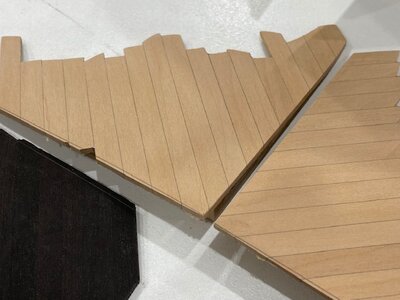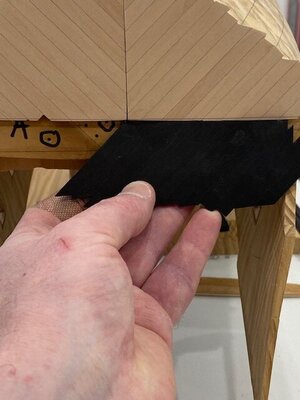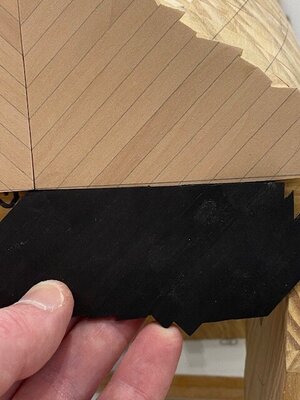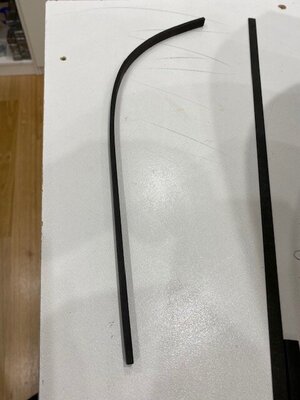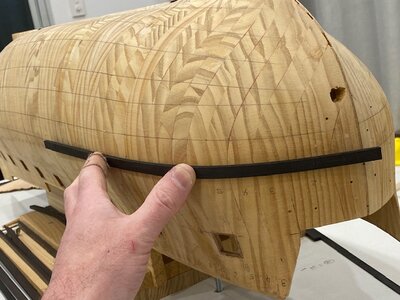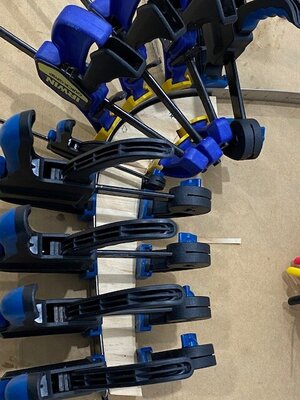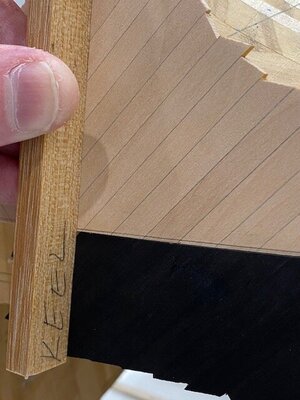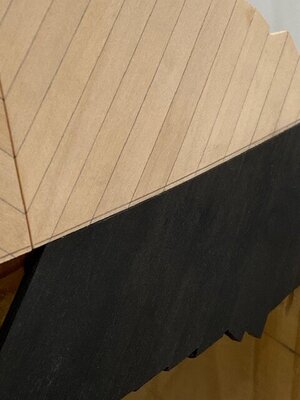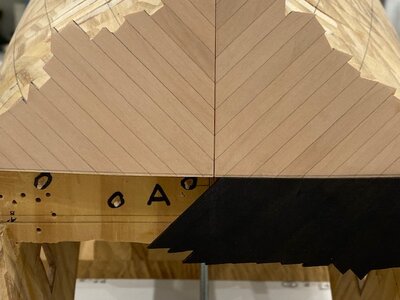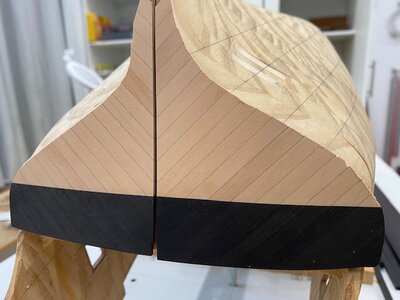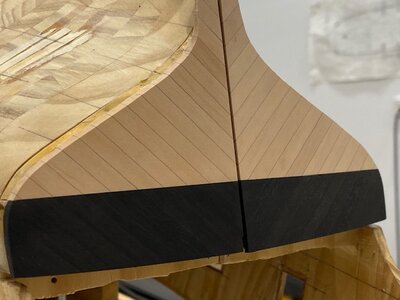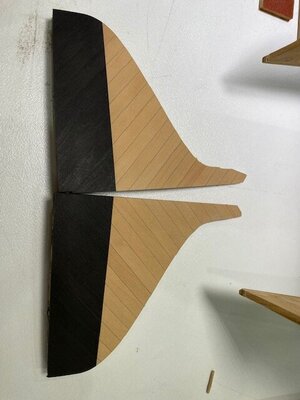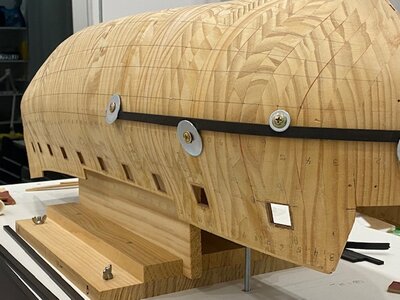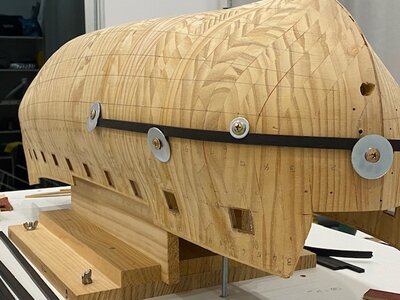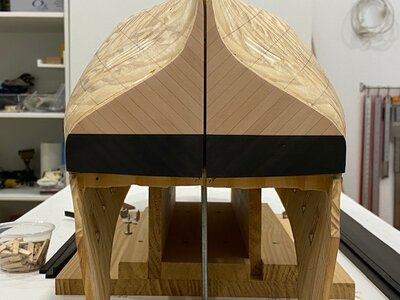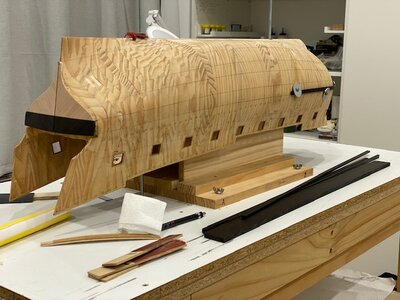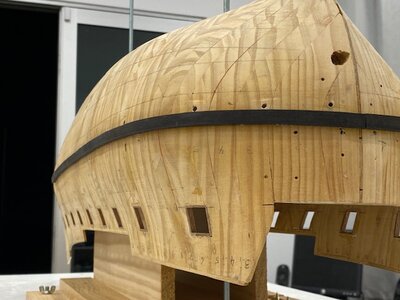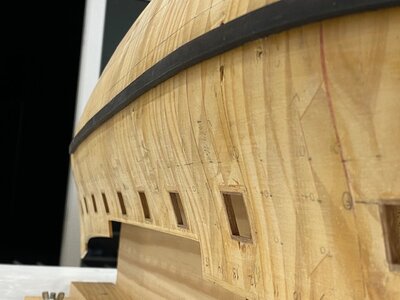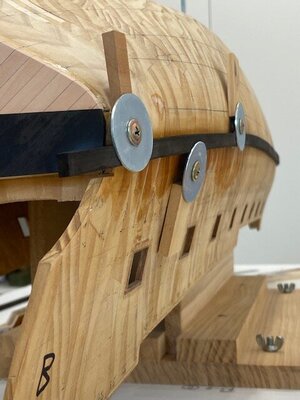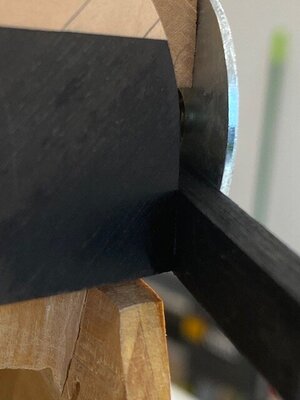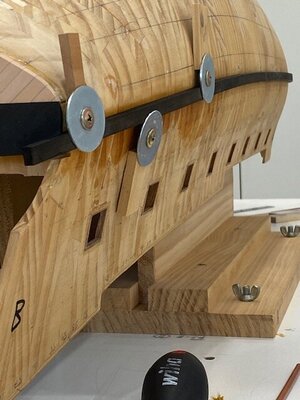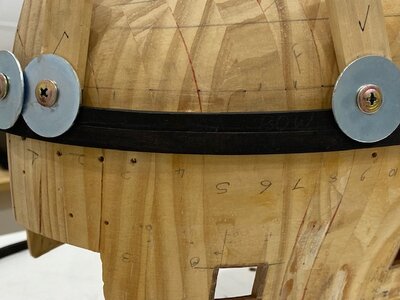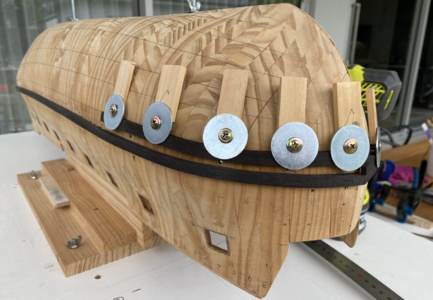Hello everyone!
My sincere apologies for my absence and also for not replying to the thoughtful birthday messages. Thank you for these!
I am making good progress and post some photos of my work in the last few days.
I am making the stern piece before I start the hull planking. The reason for this is the hull planking wraps back on to the stern and the very end of each hull plank sits directly on top of a stern piece with a very tight join. I cannot disrupt this join in any way.
My stern is going to be made from pear and black hornbeam planked on a 45 degree angle as per the plans. Each pear plank will turn in to a black hornbeam plank and the delineation between pear and black hornbeam will occur along a clearly defined straight line (which joins the bottom edge of the wales on the hull). This will become obvious as I start the hull planking so please look out for future photos to explain this better.
My technology is not conventional as I actually make the pear and black hornbeam planking off of the model rather than planking directly on the stern piece itself. This gives me a lot of flexibility.
Note in two of the photos where I am holding the black hornbeam against the pear (with the pencil line) that this join is not finished yet. I was experimenting with sanding methods to allow a perfect join and now know how I will do this.
The black hornbeam I have is incredibly black. The piece you see in the photo is made from about 10 planks with no varnish or any sort of finish at all.
You will also notice one black hornbeam plank that has been steamed and bent (almost 90 degrees) and is ready to attach to the hull!
My plan is to have the hull planking (main wales and below) completed in the next 4 months.
